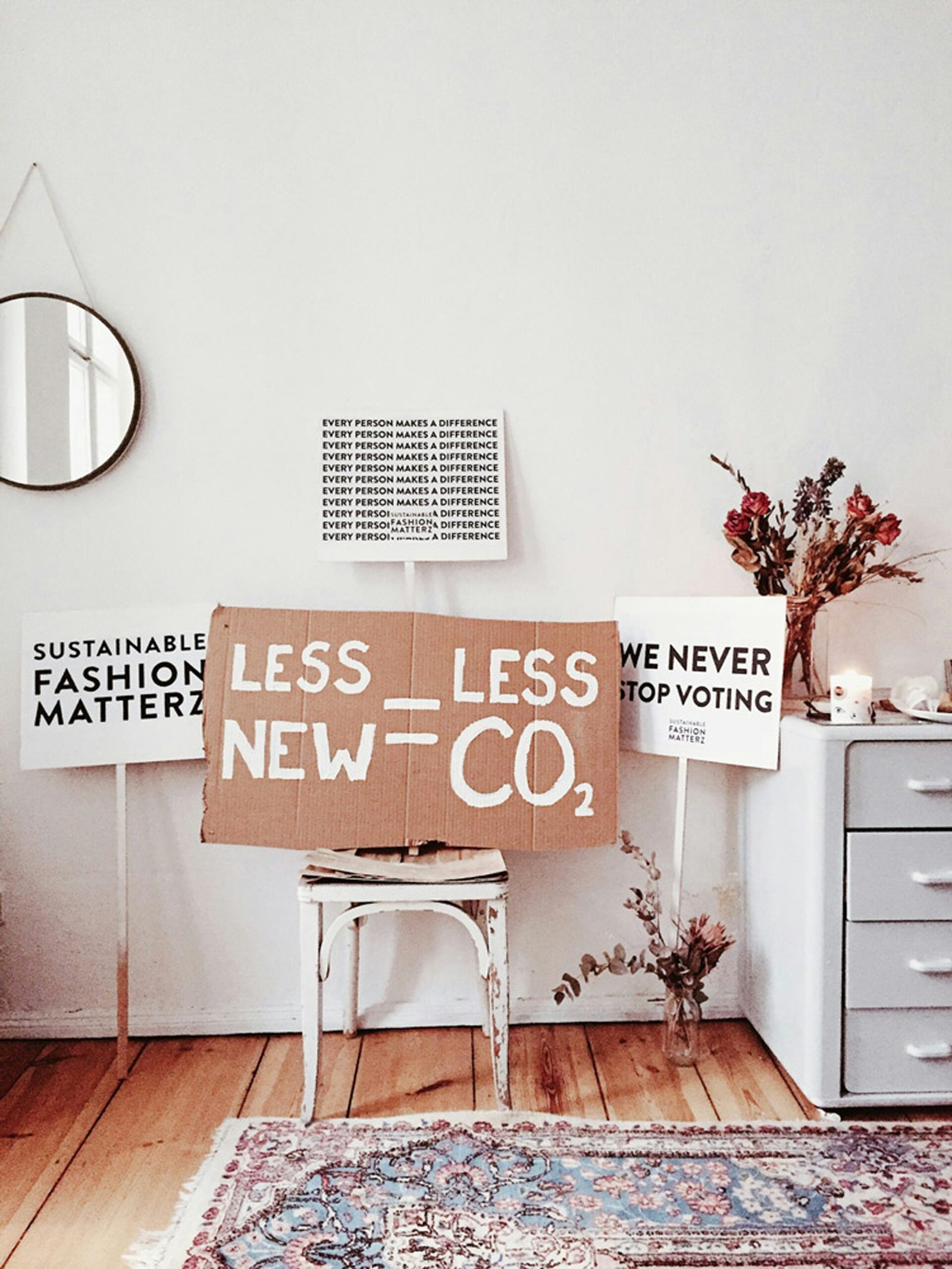
Innovations in Sustainable Fashion
Sustainable fashion is a growing movement within the fashion industry that aims to minimize the negative environmental and social impacts associated with clothing production. As consumers become more conscious of the need for sustainable practices, fashion brands are increasingly adopting innovative approaches to create eco-friendly and ethically produced garments. In this article, we will explore three key innovations in sustainable fashion: bio-based materials, renewable energy, zero-waste designs, and circular fashion.
Bio-based materials are an exciting development in sustainable fashion. These materials are derived from renewable resources such as plants, algae, and even agricultural waste. By using these materials, fashion brands can reduce their reliance on non-renewable resources like petroleum-based fabrics. For example, innovative companies are now producing fabrics made from pineapple leaves, orange peels, and even mushrooms. These bio-based materials not only have a lower environmental impact but also offer unique and innovative textures and aesthetics in fashion.
Renewable energy is another important innovation in sustainable fashion. Traditional clothing production processes consume a significant amount of energy, often sourced from fossil fuels. However, fashion brands are increasingly investing in renewable energy sources such as solar and wind power to power their manufacturing facilities. By transitioning to renewable energy, these brands can significantly reduce their carbon footprint and contribute to a more sustainable future for the industry.
Zero-waste designs are also gaining popularity in the sustainable fashion movement. Traditional fashion production generates a substantial amount of waste, from fabric scraps to unused materials. However, designers are now embracing zero-waste principles, which involve designing garments in a way that minimizes or eliminates waste throughout the production process. This can include techniques such as pattern cutting to maximize fabric utilization, upcycling or repurposing materials, and adopting modular designs that allow for easy repair and disassembly.
Furthermore, circular fashion is an emerging concept that aims to create a closed-loop system within the fashion industry. Instead of the traditional linear model of “take-make-dispose,” circular fashion focuses on designing garments that can be recycled, repaired, or reused at the end of their life cycle. This approach reduces the amount of clothing that ends up in landfills and promotes a more sustainable and circular economy. Fashion brands are now exploring innovative ways to implement circular fashion, such as designing garments with removable or interchangeable parts, using recycled materials, and establishing take-back programs to collect and recycle old clothing.
In conclusion, sustainable fashion is being driven by innovative approaches that prioritize eco-friendly materials, renewable energy, zero-waste designs, and circular fashion. These innovations not only reduce the environmental impact of the fashion industry but also offer unique and exciting opportunities for designers and consumers alike. As the demand for sustainable fashion continues to grow, it is essential for brands to embrace these innovations and contribute to a more sustainable future for the industry.
Bio-based Materials
One of the most exciting developments in sustainable fashion is the use of bio-based materials. These materials are derived from renewable resources such as plants, algae, and fungi, and offer a more environmentally friendly alternative to traditional fabrics like cotton and polyester.
One example of a bio-based material is Tencel, a fabric made from cellulose fibers sourced from sustainably managed forests. Tencel has gained popularity in the fashion industry due to its softness, breathability, and biodegradability. Another bio-based material is Piñatex, a leather alternative made from pineapple leaf fibers. Piñatex not only reduces the demand for animal leather but also supports pineapple farmers in developing countries.
By utilizing bio-based materials, fashion brands can reduce their reliance on non-renewable resources and contribute to a more circular economy. These materials also tend to have a lower carbon footprint and require less water and energy during production.
In addition to Tencel and Piñatex, there are several other bio-based materials that are making waves in the fashion industry. For example, soy silk, also known as vegetable cashmere, is a fabric made from the waste byproduct of soybean oil production. This material is not only soft and luxurious but also has natural insulating properties, making it ideal for both summer and winter garments.
Another emerging bio-based material is Mylo, a leather alternative made from the root structure of mushrooms. Mylo has a similar look and feel to animal leather but is completely cruelty-free and sustainable. It is also highly versatile and can be used in a wide range of applications, from shoes and bags to upholstery and interior design.
Aside from these innovative materials, bio-based textiles are also being developed using algae and bacteria. Algae-based fabrics are known for their natural UV protection and moisture-wicking properties, making them suitable for activewear and swimwear. Bacterial cellulose, on the other hand, is a bio-based material that can be grown in a lab using bacteria cultures. This material has a unique texture and is highly durable, making it a promising option for sustainable fashion.
As the demand for sustainable fashion continues to grow, so does the research and development of bio-based materials. Innovations in this field are constantly being made, and it is an exciting time for the fashion industry as it moves towards a more sustainable and eco-friendly future.
Renewable energy has emerged as a crucial element in the quest for sustainability in the fashion industry. The adoption of renewable energy sources to power manufacturing processes is a significant step towards reducing the environmental impact of traditional garment production. In the past, the fashion industry heavily relied on energy-intensive methods that were powered by fossil fuels, leading to increased greenhouse gas emissions and exacerbating climate change.
However, the tide is turning as more and more fashion brands recognize the importance of transitioning to renewable energy solutions. Solar and wind power have emerged as popular choices for powering factories and manufacturing facilities. By installing solar panels on factory roofs or sourcing electricity from wind farms, these brands can effectively reduce their carbon footprint and decrease their reliance on non-renewable energy sources.
Some fashion companies have taken their commitment to renewable energy a step further by striving to become completely energy self-sufficient. One such example is the Swedish brand Nudie Jeans, which has set up its own repair and recycling facilities that are powered entirely by renewable energy. This innovative approach ensures that every stage of the production process, from repairing and recycling to manufacturing, is conducted sustainably.
Embracing renewable energy not only helps fashion brands reduce their environmental impact but also presents economic benefits. By investing in renewable energy infrastructure, these companies can potentially save on energy costs in the long run. Additionally, the use of renewable energy sources can enhance a brand’s reputation and appeal to environmentally conscious consumers who prioritize sustainable practices.
Moreover, the adoption of renewable energy in the fashion industry can inspire other sectors to follow suit. As fashion brands lead the way in implementing renewable energy solutions, they serve as role models for other industries, encouraging them to explore and adopt sustainable practices as well.
Zero-Waste Designs
Zero-waste designs are another innovative approach to sustainable fashion. Traditional clothing production often generates a significant amount of waste, with fabric scraps and offcuts ending up in landfills. Zero-waste designs aim to eliminate this waste by utilizing every piece of fabric and minimizing the amount of material that goes unused.
One technique used in zero-waste designs is pattern engineering, where patterns are strategically placed on the fabric to minimize waste. By carefully planning the layout of each pattern piece, designers can optimize fabric usage and reduce the amount of leftover material.
Another approach is upcycling, which involves transforming discarded or unused materials into new garments or accessories. This not only reduces waste but also adds a unique and creative element to the design process.
Brands like Eileen Fisher and Zero + Maria Cornejo are known for their commitment to zero-waste designs. They prioritize sustainable production methods and create garments that are both stylish and environmentally friendly.
Zero-waste designs have gained popularity in recent years as consumers become more conscious of the environmental impact of the fashion industry. By embracing zero-waste practices, designers are not only reducing waste but also challenging the traditional linear model of fashion production.
Instead of the traditional approach of designing, producing, and disposing of clothing, zero-waste designs promote a circular economy where materials are reused and repurposed. This shift towards circularity is essential in creating a more sustainable and ethical fashion industry.
Zero-waste designs require careful planning and attention to detail. Designers must consider the shape and size of each pattern piece to ensure they fit together without leaving any unused fabric. This process often involves experimentation and creativity to find innovative solutions to minimize waste.
Additionally, the choice of materials plays a crucial role in zero-waste designs. Designers may opt for organic or recycled fabrics that have a lower environmental impact compared to conventional materials. By selecting sustainable materials, designers can further contribute to reducing the overall carbon footprint of their creations.
Overall, zero-waste designs are transforming the fashion industry by challenging the status quo and encouraging more sustainable practices. Through pattern engineering, upcycling, and a commitment to circularity, designers are paving the way for a future where fashion can coexist harmoniously with the environment.

